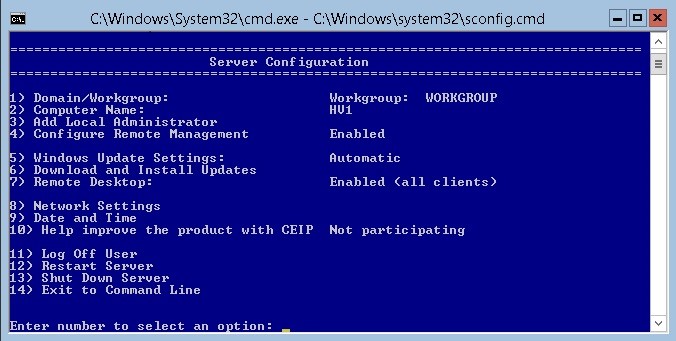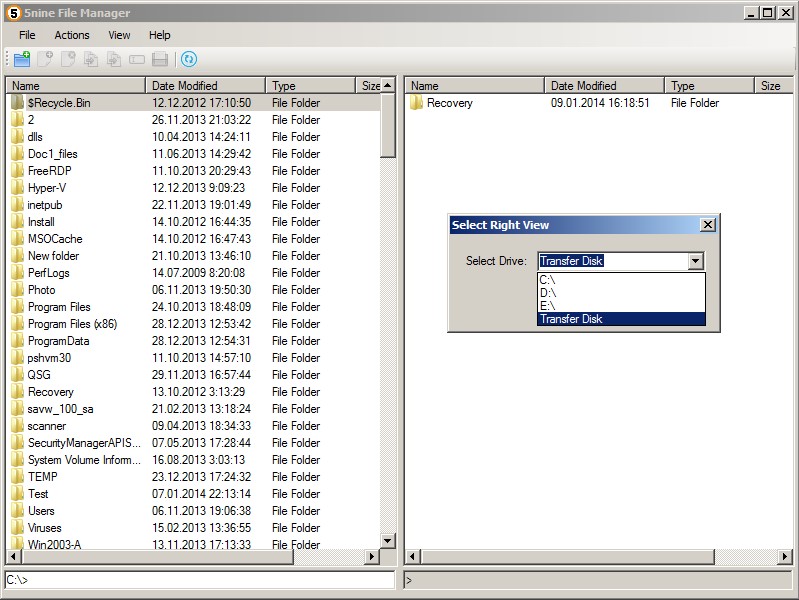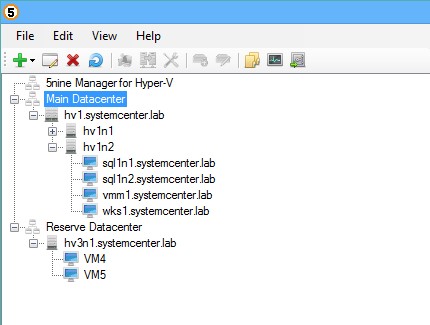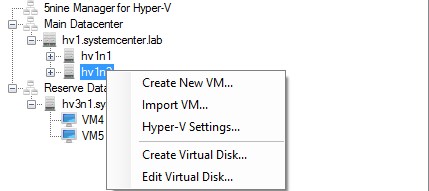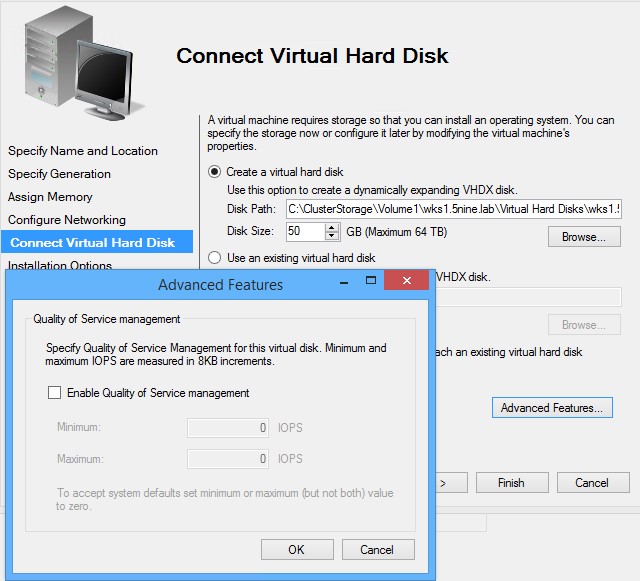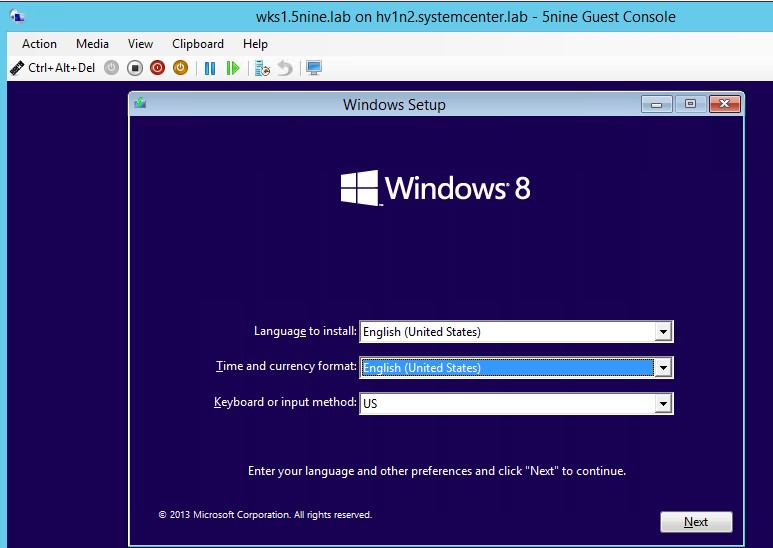5nine Manager — cross-version tool for Windows Server Core and Hyper-V Server
The Hyper-V 2012 R2 Server is the free version of hypervisor included in Windows **** Server 2012 (full or core versions). It also can be deployed standalone. This product has all the features needed to make a full-featured server virtualization platform, which includes support for failover clusters, RemoteFX, and second generation (Gen2) Virtual Machines (VMs).
Following installation, the administrator receives the surprise of inconvenience in usage shown in Figure 1, Server Configuration.
**Figure 1: Server Configuration Window **
Basically, the Hyper-V Server is a Windows server in Server Core Mode with remote roles, components, and a shell. The integrated Server Configuration tool allows basic server parameters (i.e., names, IP addresses, domain membership, and remote management) to be assigned; however, questions remain open as to creating, changing, and managing the virtual machines for which the server was deployed.
Microsoft offers graphical solutions, such as Remote Server Administration Tools (RSATs), Virtual Machine Manager (VMM), and the traditional PowerShell. These tools are not always advantageous, especially for SMBs for the following reasons:
· Specific admin skills and an extra client station for remote management are required. VMM is not always affordable for small- and medium-sized businesses.
· Dedicated workstations with the required Operating Systems (OS) cannot be always maintained.
You can use Remote Desktop Services with the necessary snap-ins, but why complicate everything when there is 5nine Manager for Hyper-V ?
What is 5nine Manager for Hyper-V and How Does It Work?
5nine Software (www.5nine.com ), a Microsoft partner in the development of highly-specialized products, is best known for its solutions 5nine Cloud Security for Hyper-V and 5nine V2V Easy Converter. Given the specificity of the software mentioned previously, 5nine also provides 5nine Manager for Hyper-V as a cross-version management tool for Microsoft hypervisors.
This means that from an admin workstation that runs a client version of Windows x64 you can have full control of Hyper-V whether it is Windows Server 2008 R2 SP1, Windows Server 2012, Windows Server 2012 R2, or Hyper-V Server; or part of free Hyper-V Servers for corresponding generations both in clusters and standalone configurations. All of this is from a single console installed either remotely or locally!
Unlike many solutions, the fully functional Hyper-V management tool is extremely compact. 5nine Hyper-V Manager can be also installed directly on a server that runs Microsoft Hyper-V Server. The product includes a file manager (Figure 2) with a graphical interface for working with the server's file system. It also makes data exchange possible with local VMs using a special virtual hard drive:
Figure 2: 5nine File Manager Data Exchange
Figure 3: Main Datacenter
In the lab environment, the hv1.systemcenter.lab cluster was deployed on Windows Server 2012 in the Main Data Center (Figure 3), and the hv3n1.systemcenter.lab was deployed on Windows Server 2008 R2 SP1 in the Reserve Data Center with all three nodes running in Core Mode.
5nine Manager supports a virtual machine's full lifecycle, from configuring a virtual switch to deploying, changing, and deleting a VM. Consider these possibilities in the creation of a client OS for a highly available VM.
With regard to virtual switches, the Virtual Network Manager (Figure 4) makes it easy to create, change, or entirely delete all three types of virtual networks.
Figure 4: Virtual Network Manager Options
After the virtual switch is configured, select the desired deployment node (which may be a cluster) to view the New Virtual Machine Wizard (Figure 5).
Figure 5: Virtual Machine Selection
Figure 7: Virtual Hard Drive Performance Management
** **
After some simple adjustments to the OS installation’s image connection, the 5nine VM Guest Console allows you to see what occurs on the virtual machine (Figure 8). This is without any other changes to the deployment of additional management VMs with a proxied Remote Desktop Protocol (RDP).
Figure 8: 5nine Guest Console
In contrast to other solutions, 5nine Hyper-V Manager supports managing standalone servers of different versions as well as clusters from a single console.
The following Failover Cluster Manager operations are supported:
· Create/delete clustered virtual machines.
· Migrate virtual machines between cluster nodes.
· Migrate virtual hard drives.
· 5nine Hyper-V Manager provides administrators with a series of features that are lightweight and simplify the deployment of the virtual infrastructure. For example, VM cloning lets you create an unlimited number of copies of an existing VM with the single push of a button.
· If there are many servers, you can copy Hyper-V settings between servers. Change settings on one server, and then copy them in a single click to other servers in the network through the 5nine Manager for Hyper-V console.
5nine's Manager for Hyper-V solution is a simple, centralized management tool for a virtual infrastructure that offers administrators many additional functions that exceed the basic features of Microsoft Hyper-V Manager and Microsoft Failover Cluster Manager.
Free version with limited functionality is available at http://www.5nine.com/5nine-manager-for-hyper-v-free.aspx
